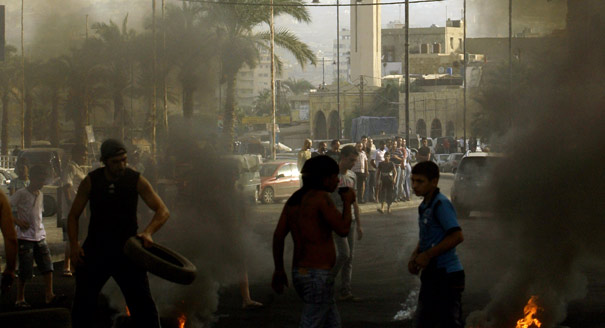The question of whether to arm the Syrian rebels has received much airtime recently. In the absence of political dialogue or other solutions (such as a full-scale invasion), supplying arms seems to be the last resort for those who want to accelerate the fall of President Bashar al-Assad’s regime.
Whether this will actually contribute to the opposition’s victory is debatable. But one thing is certain: it could create more problems, because militias are a lot like Gremlins.
Gremlins are fictitious creatures that starred in a 1984 Hollywood horror comedy. Initially harmless and known as Mogwai, they multiply when touched by water, and become outright destructive and nasty Gremlins if fed after midnight.
Militias have a lot in common with Gremlins. They usually emerge to meet a basic human need for security, often as innocuous neighborhood watch organizations. They multiply because the need for them increases and because there is no state strong enough to prevent them from doing so. And they turn bad when they have existed long enough to develop political ambitions and have been fed enough equipment to give these ambitions muscle.
The formula for the transformation from inoffensive armed group (Mogwai) to ugly political player (Gremlin) is dependent on time and supply. Put simply: the more established, well-resourced, and influential a militia is, the more it will resist control by any legal or other framework.
Examples of this abound. The Libyan militias, who were considered heroes in October 2011, have refused to disarm. Today they control borders, critical infrastructure, and oil facilities. As long as they are allowed to do so, they will not cause trouble. But now, as they still won’t disarm, they have become a huge obstacle in Libya’s path to full sovereignty.
The Lebanese militias grew stronger than the Lebanese army during the country’s fifteen-year civil war. The leading militia, the Lebanese Forces, even suggested that the army should be dissolved and the country divided into different areas, each controlled by a militia.
Iraq’s Muqtada al-Sadr solidified his position in the national political landscape thanks to his Mahdi Army, which had to be cracked down on violently in 2008 because it was behaving like an independent state within its Baghdad suburb.
In Bosnia, three militias became three separate armed forces, and long and arduous efforts were needed to turn them into a single military a decade later.
Once militias have reached the postmidnight “Gremlin” state, they won’t accept simple integration into the state’s military or mundane demobilization programs. They will have their own ideas, because their power now has negotiation value.
Of the 250,000 Libyan thuwar (revolutionaries), only 6,000 wanted to be integrated into the new armed forces. Their Lebanese counterparts also refused integration and left the army, only to rearm. That said, national military forces usually disapprove of militias because the two groups are each other’s antithesis: militaries are professional and bound by law, while militias are unprofessional and a law unto themselves.
The point is this: anybody who advocates arming the Syrian rebels should also think about the day after Assad’s departure. The Mogwai that is multiplying today will become a very powerful agent in the form of a Gremlin. This analogy could help the West make intelligent choices when deciding how to arm the rebels. That could mean, for example, providing weapons with an expiry date or that use particular ammunition that only the West can supply.
It could also mean attaching conditionality to the weapons: requiring that the arms be returned or destroyed at a later date—however naive that may be. Cash or other incentives could be used to encourage adherence to these conditions. Setting practical and political limitations on the weapons now could help to limit their destructive potential later.
Most importantly, postconflict plans should anticipate the militia’s role in the immediate aftermath of the crisis—not only in terms of demobilization, disarmament, and reintegration—but crucially in terms of security. Handing responsibility for postconflict security to those groups will only increase their power, so will make disarming them even more difficult (see the case of Libya). A mission with a UN mandate then has to be ready, capable, and willing to meet the security need that brought the militias into being in the first place.
If such planning is omitted, the end of the Syrian conflict might only be an intermission. Relapse into fighting occurs in 40% of postconflict societies and, more than once, disgruntled militias have taken the lead in restoring a conflict that was more profitable for them than the ensuing peace.
In Gremlins, the only way to end the creatures’ reign of terror was to expose them to sunlight—in other words, to limit their power with more power.






